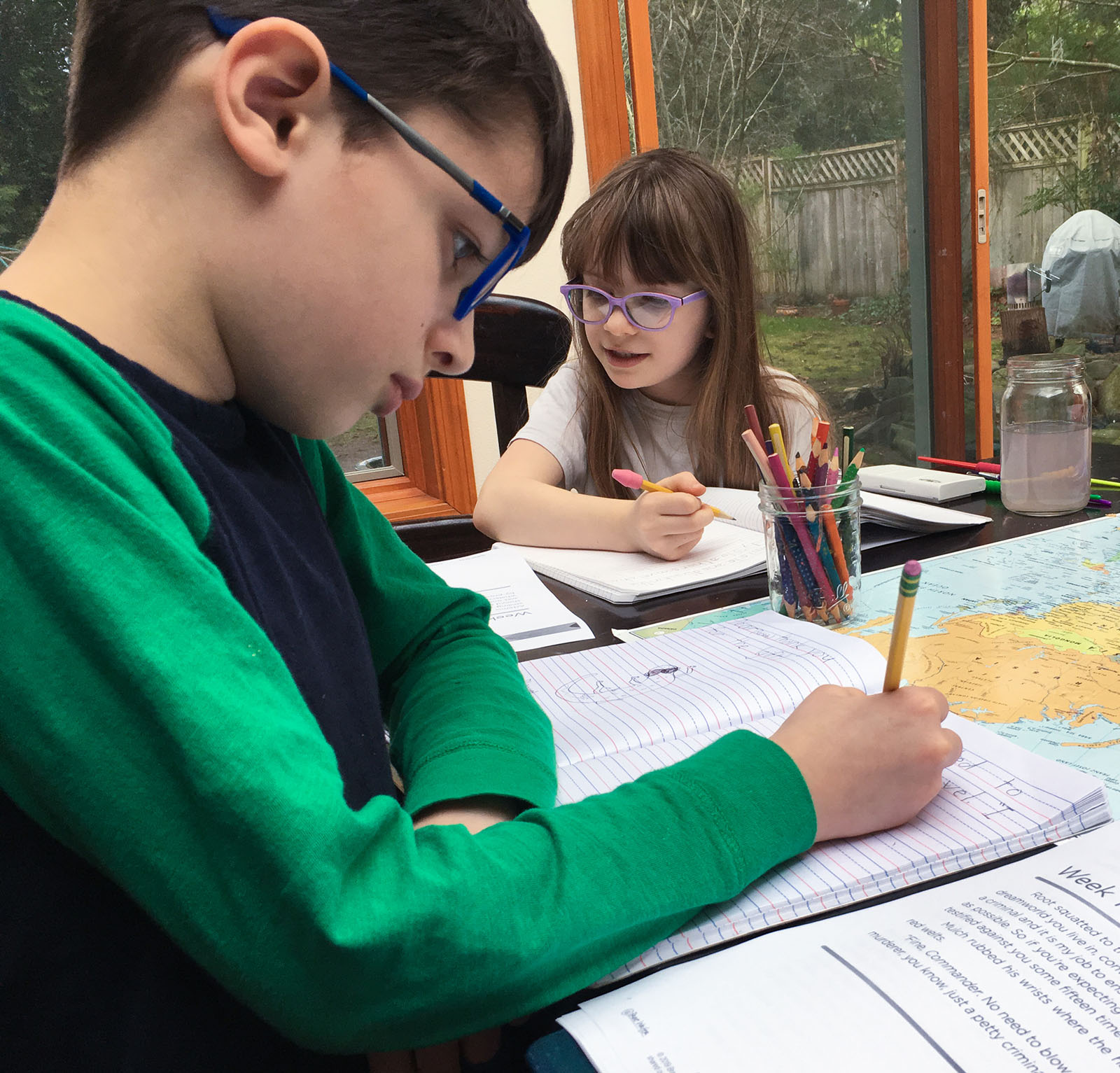Back to the Basics
Reading, writing and math

The idea of homeschooling can feel so daunting. But it doesn’t always have to be so scary. And by nature it will not look the same as a day at a school.
In hard times it is good to keep it simple and name what matters. What matters right now for you and your family? Do you need structure to define time with the kids and time without? When we are trying to take it slow we always go back to reading, writing and math.
If this is too much right now then practice life together at home. There is a lot to learn in the day to day. Show them how it is done. Let them do it with you. Cook meals together, bake cookies, do laundry, clean windows, water plants, let them run the vacuum cleaner (my daughter loves this, I don’t know why). Let them participate, however imperfectly. Read stories, live life together, and when you are ready for more then come back and consider adding more pieces to learning at home.
Reading
If reading lessons are too much right now, read aloud to them or use audio books. Teaching kids to read is not for the faint of heart, or worn out parents. I feel like a superhero having made it through phonics with three kids now. If you fall asleep while your kids are sounding out letters, you are not alone.
Read to them. They will learn vocabulary and all kinds of things just from listening to you (or an audio book). Do not underestimate the power of story. Bonus for sitting together and snuggling while reading.
Some days we do reading lessons and some days we just make time to read what is interesting to them at the time. And sometimes I read aloud to them while they craft or do a puzzle.
Reading is a gift that will be with them their whole lives. Help them love reading. This will keep them motivated through the difficult job of learning phonics.
If they are still learning to read, I really love the All About Reading curriculum. I started with the pre-reading level and am now working through level 4 with my third grader. There are lessons, flash cards, games and cute stories to read. We alternate between reading lessons and having dedicated time to read what they want. I want them to progress but I don’t want to make the process painful for them.
If you are unsure where to start there is a placement test you can download.
Writing
Writing can be journaling a few lines a day, or setting the timer and writing whatever you are thinking. This is a good time to start a daily practice, to work out feelings and ideas. This is a habit that all the experts agree is beneficial tool for life. For littles that are not writing yet, they can dictate to you or they can practice handwriting.
For handwriting you can select a few sentences from a book you are reading, the Pledge of Allegiance, song lyrics, or whatever words you choose and have your kids trace it or copy it. Copy work is a tool that can teach all kinds of things. More on copy work below.
If you want a workbook the two we use are Handwriting Without Tears and A Reason For Handwriting. I do not use teacher manuals for either of these; they are both pretty self explanatory. I like both of these. Some of my kids like one and some the other.
For more specific writing projects, Brave Writer offers Jot it Down (elementary) and Partnership Writing (middle school). We have both and go back to these projects often using different topics each time. One program can span many ages, even outside the listed age groups.
We have gotten a lot out of these projects. The author, Julie Bogart, takes the fear out of writing. She has homeschooled all her children, who are all now adults. I really appreciate the perspective of a mother and teacher who has gone before me.
Another writing program the kids have really liked is the NaNoWriMo (National Novel Writing Month) curriculum. There are free resources online and groups you can join. They are doing Camp NaNoWriMo for the month of April.
Reading and Writing together
You can get reading and writing done together! I highly recommend Brave Writer’s Arrow and Boomerang programs, for elementary and middle schools, respectively. Both are one-shot tools that give you four weeks of reading, handwriting, copy work, spelling, grammar, writing! We use these Arrow lessons a lot and I have always learned something myself — a small investment that can give you a month of learning and fun for you and your kids.
Choose a book to read together then follow the four weekly studies. These lessons can be filled out as needed and supplemented with movies, a themed meal or a party at the end. There are often party and theme suggestions in the program.
Math
Math-U-See works well for all my children. This is a base-ten approach to math that builds concepts in an easy-to-understand way.
We watch the video lessons together, then the kids work out of the workbooks and solidify concepts by using math blocks.
If curriculum isn’t in your budget right now there are so many resources to keep the kids learning. Or you can highlight the math that happens in your daily life.
You already teach your kids so many of these. You can do this! Name what matters, start small, read together and add as you to need to.
I hope this helps. If you have any more questions let me know.